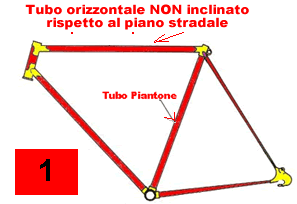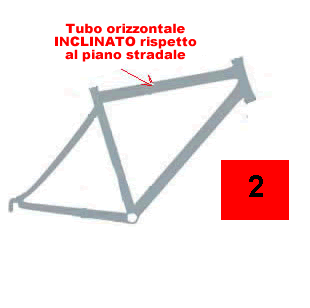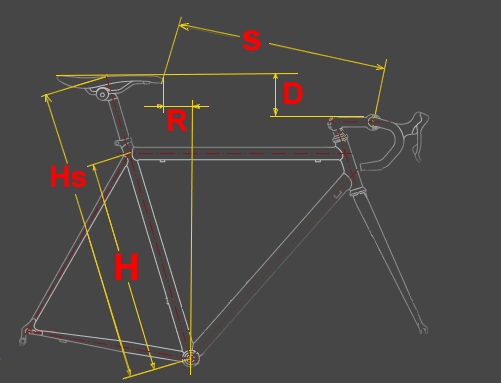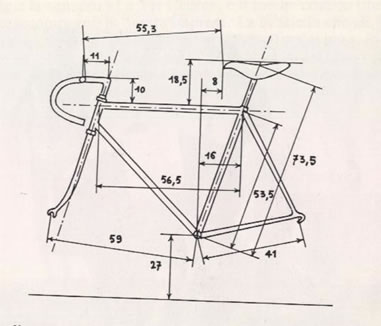Anthropometric relationships of the majority of the Western population
Crotch / Height = 0.47
Trunk / Crotch = 0.76
Arm / Crotch = 0.87
CALCULATION
OF BICYCLE FRAME
SEAT HEIGHT - DISTANCE SADDLE - HANDLERBAR
The type of calculation depends on the structure of the frame.
Who is interested in the calculation of the structure as traditional sketch number 1 below calculates in this page.
Who is interested in the calculation of the structure with inclined horizontal pipe as per sketch No. 2 click here and you move to another page because the process is different. (Slope Frame)
 |
 |
On the left are represented measurements of the Cyclist.
The key measure for the dimensioning of the bike with traditional frame as shown in Figure 1 is represented by the length of the Crotch.
The height of the Cyclist, the length of the trunk and arms do not enter into the calculation but may serve in the Cyclist to complete a self-assessment of its body proportions if it considers that they are different from the majority of the population.
Click
here if you think your body structure has significant disproportions.
Measuring only the length of the Crotch, the Cyclist with normal body proportions is able to calculate the frame of the bicycle racing or sports and mountain biking, as specified below if you belong to the type Image 1 above.
Why the height of the cyclist does not enter the calculation?
Because the height avoids upset their calculations for those Cyclists who have a long or short neck or head developed vertically rather then horizontal.
The length of the head and neck have no role in determining the size of the frame that is right not to consider them.
The proposed method of calculation is taken from the book: 'Road Racing: Technique and Training Bernard Hinault and Claude Genzling (Authors)' and will be fully implemented in all traditional bikes: Road Bike, City Bike and Mountain bike as figure 1 above.
For bikes with inclined tube horizontal (SLOPE COMPACT), not present in the 90's when this method has been widespread, it need to follow a different procedure. Click here.
Click here to learn how to measure the length of the Crotch
When the cyclist knows the extent of his Crotch can calculate the frame of any type of bicycle having frame as the image number 1 choosing from the following paths:
| Stay
on this page and with a couple of multiplications and a few notes
you can to calculate your frame and getting explanations on how
to how the data is formed. |
|
| Access
the tables without making calculations to obtain the measure of the
frame.
Click here |
|
|
Use the online calculator that automatically performs the calculation of the frame with the method Hinalut.
|



